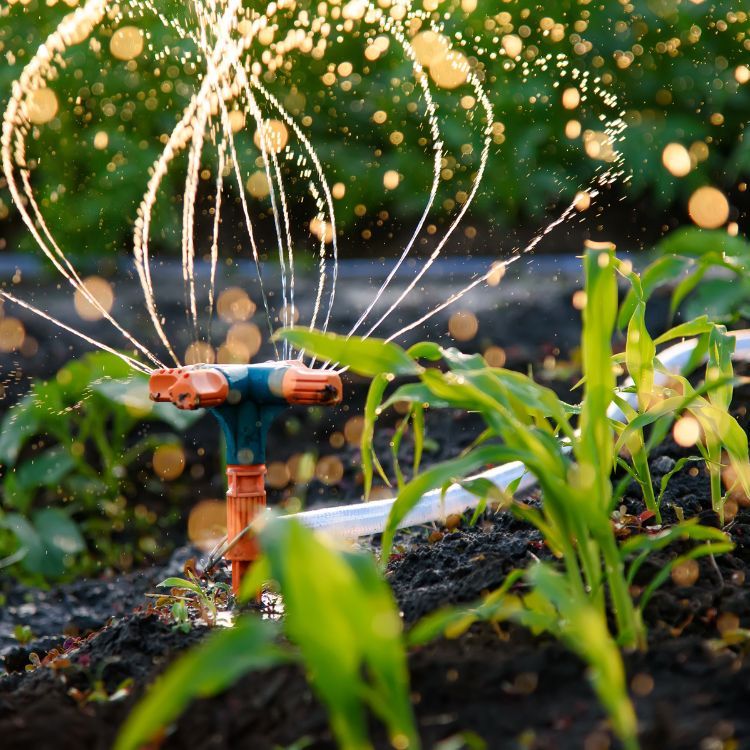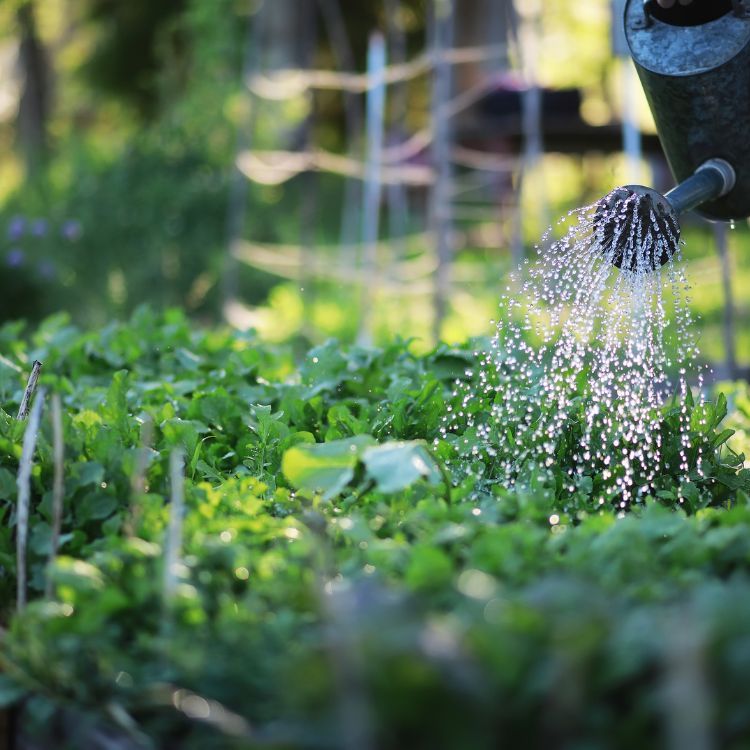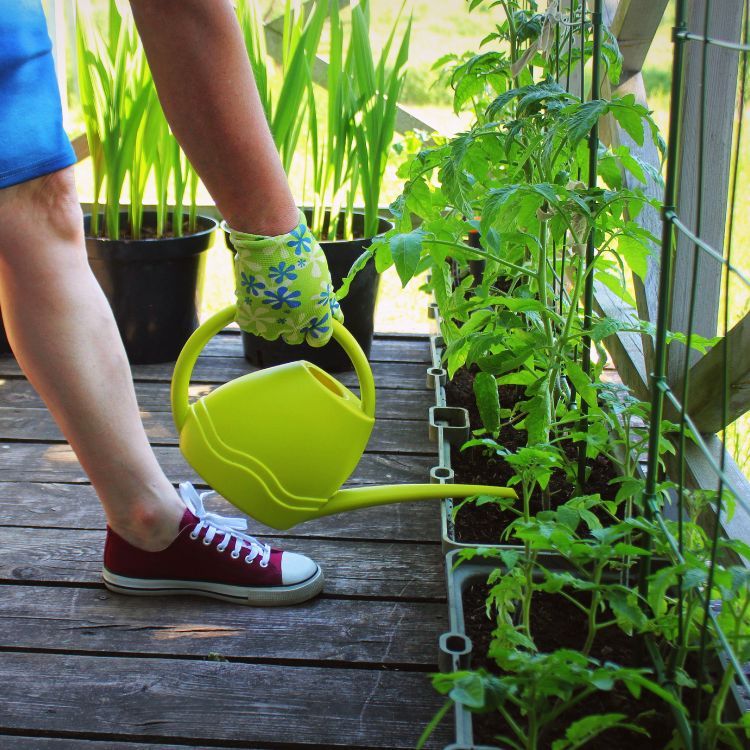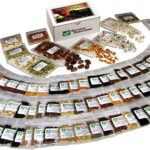
Key Takeaways
Watering your survival garden is not just about quantity; it’s about timing and technique.
Understanding your soil type and your plants’ needs is crucial for efficient watering.
A weekly watering schedule should be flexible to accommodate weather changes and plant growth stages.
Deep watering encourages strong root development, which is key for a resilient garden.
Using sustainable practices like rainwater harvesting and drip irrigation can save water and benefit your garden.
Why Water Wisely? The Foundation of Garden Health

Let’s dive in: water is like the lifeblood of your garden. Without it, even the most resilient plants will wither away. But it’s not just about dousing your plants with a hose and calling it a day. Smart watering practices are the bedrock of a thriving survival garden. They ensure that every drop counts, and your plants get exactly what they need to grow strong and productive.
From Seed to Harvest: Water’s Role in Your Garden’s Lifecycle
From the moment you plant your seeds, water is a critical ally. It helps seeds to germinate, supports seedlings as they establish themselves, and aids in nutrient uptake for growing plants. When it comes to harvest time, proper watering can mean the difference between a bountiful yield and a meager one. That’s why it’s essential to get your watering schedule right from the start.
Understanding Your Garden’s Thirst
Before we can create a watering schedule, we need to get to know our garden’s unique needs. It’s a bit like getting to know a new friend. You wouldn’t know their favorite food or how they like their coffee without asking. Similarly, your garden has its own preferences when it comes to water.
Assessing Soil Moisture Before You Pour
The first step is to check the soil. A simple test is to stick your finger about an inch into the soil. If it’s dry, it’s time to water. But if it’s still moist, you can wait. This test is so simple, even a kid can do it! And it’s a great way to prevent overwatering, which can be just as harmful as not watering enough.
Recognizing Plant Signals and What They Mean
Your plants will tell you when they’re thirsty. Look out for wilting leaves, which often signal a need for water. But beware: leaves can also wilt from overwatering. The key is to observe and respond to your plants’ signals consistently. Once you get the hang of it, you’ll be speaking the language of plants in no time!
Creating the Weekly Watering Blueprint
Now, let’s put together a watering schedule that works for your garden. Remember, this isn’t set in stone; it’s a starting point that you’ll adjust as you learn more about your garden’s needs.
Designing a Schedule Tailored to Your Garden’s Needs
Consider your climate, the time of year, and the type of plants you’re growing. A basic rule of thumb is to water deeply once a week, but this can vary. For example, seedlings need more frequent watering because their root systems aren’t established yet. As plants grow, they’ll need less frequent, but deeper watering sessions.
Key Times for Watering: Dawn and Dusk Dynamics
The best times to water are in the early morning or late evening when the sun is not as intense. Watering at these times reduces evaporation and ensures that water reaches the roots where it’s needed most. Plus, it’s a peaceful way to start or end your day, listening to the birds as you give your plants a drink.
Implementing Watering Strategies

When it comes to watering, one size does not fit all. Your survival garden is a complex ecosystem, with each plant having its own unique needs. By implementing smart watering strategies, you ensure that every plant gets just the right amount of water without waste.
Deep Watering Techniques for Root Growth
Deep watering is a technique that encourages plants to grow deep, strong roots. Instead of a quick sprinkle, deep watering involves giving your plants a longer, more thorough drink. Here’s how to do it:
Water slowly, allowing the moisture to penetrate deep into the soil.
Aim for the base of the plant to reduce evaporation and leaf diseases.
Check the soil moisture by digging a small hole near the plant to see if the water has reached 6 to 12 inches deep.
Deep watering promotes healthy root development, which is essential for plants to access nutrients and withstand dry conditions. It’s a bit like teaching your plants to fish: give them the tools to fend for themselves, and they’ll be more resilient in the long run.
Utilizing Mulch and Irrigation Systems
Mulch is your garden’s best friend. It conserves moisture, keeps weeds at bay, and helps regulate soil temperature. Apply a 2-3 inch layer of organic mulch, such as straw or wood chips, around your plants. This simple step can drastically reduce the frequency of watering needed.
For larger or more established survival gardens, consider setting up an irrigation system. Drip irrigation is a fantastic option because it delivers water directly to the roots, minimizing waste and maximizing efficiency. Plus, it’s a real time-saver for busy gardeners.
Adjusting Your Watering Tactics
As your plants grow and seasons change, so should your watering habits. Paying attention to the weather and the life cycle of your plants will guide you in making the necessary adjustments.
Weather Patterns and Seasonal Adjustments
Keep an eye on the forecast. If rain is expected, you can skip a watering session. Conversely, during hot or windy weather, your plants may need extra water to compensate for increased evaporation.
When to Ramp Up or Scale Back
During the peak of summer, your plants’ water needs will be at their highest, especially if you’re growing water-loving crops like tomatoes or cucumbers. But as the weather cools and plants mature, you can start to scale back. Overwatering in cooler weather can lead to root rot and other issues.
Increase watering during heatwaves or extended dry periods.
Reduce watering as temperatures drop or when rain is frequent.
Monitor plant health and soil moisture to guide your decisions.
Remember, plants are pretty good at letting you know what they need. Droopy leaves might signal thirst, while yellowing could indicate overwatering. Keep a close eye on your garden, and you’ll learn to read the signs.
Water Conservation in Your Survival Garden
Water is a precious resource, and conserving it is not only good for the environment but also for your garden. Let’s look at some sustainable practices to make the most of every drop.
Drip Irrigation: Efficiency at Its Best
Drip irrigation is a game-changer for water conservation. By delivering water slowly and directly to the plant’s roots, it reduces evaporation and runoff. It’s also great for keeping the foliage dry, which helps prevent diseases.
Setting up a drip irrigation system can be as simple or as complex as you want it to be. You can purchase a kit or create a DIY system using hoses and emitters. The key is to ensure that the water is being delivered at a rate that the soil can absorb, without pooling or runoff.
With these tips and techniques, you’re well on your way to becoming a savvy water steward in your survival garden. Not only will you grow healthy, resilient plants, but you’ll also contribute to a more sustainable world. And that’s something to be proud of.
Water conservation isn’t just a buzzword; it’s a vital practice in your survival garden. Every drop of water saved is a drop that can sustain your plants during the driest times. Let’s explore some tried-and-true methods to make your garden an oasis of efficiency.
Harvesting Rainwater: Sustainable Practices
Catching rainwater is a smart move. It’s free, it’s easy, and your plants will love it. By setting up a simple rain barrel system, you can collect water during wetter periods to use during the drier ones. This practice reduces your environmental footprint and can also help you cut down on utility bills.
Remember, though, in some areas, there are regulations on rainwater collection, so be sure to check your local laws before setting up your system.
Common Mistakes to Avoid
Now, even the best of us can slip up when it comes to garden care. Here are a couple of common watering blunders to watch out for:
Overwatering: The Slippery Slope to Plant Problems
Too much love can be a bad thing, especially when it comes to watering. Overwatering can lead to root rot, fungal infections, and a host of other issues. Stick to your schedule, check the soil, and adjust as needed. Your plants will thank you for not drowning them in affection.
Uneven Water Distribution: Ensuring Equal Care
Just like in a classroom, every plant needs equal attention. Uneven watering can result in some plants thriving while others struggle. Use a watering can with a long spout or a hose with a gentle spray nozzle to reach all plants effectively, ensuring each one gets its fair share of H2O.
FAQs
Got questions? I’ve got answers. Here’s a quick rundown of some common queries to help keep your garden on the right track: For more detailed guidance, check out our comprehensive guide to seed starting success.
How much water does my survival garden need each week?
This is a bit like asking how long a piece of string is—it varies. But a general guideline is about an inch of water per week, either from rain or your watering efforts. Use a rain gauge to keep track, and adjust as necessary based on your specific garden conditions.
Seedlings and young plants may need more frequent, lighter watering.
Mature plants prefer a deep, thorough watering less often.
Always check the soil moisture before watering.
Can I use tap water for my garden, or should I treat it first?
Tap water is generally fine for most gardens, but if it’s heavily chlorinated, you might want to let it sit out for a day before using it. This allows the chlorine to evaporate, which is better for your plants’ health.
What time of day is best for watering my garden?
Early morning is ideal. It gives the plants time to drink up before the heat of the day, and it reduces fungal diseases by allowing the foliage to dry out quickly.
How can I tell if I’m overwatering my plants?
Signs of overwatering include yellowing leaves, wilting despite wet soil, and stunted growth. If you suspect overwatering, ease up on the H2O and let the soil dry out a bit.
What should I do if there’s an unexpected heatwave or drought?
During extreme heat, your plants will need extra water. Consider watering twice a day—morning and evening—and provide some shade during the hottest parts of the day if possible. Mulching can also help retain soil moisture.
By following these tips and keeping a watchful eye on your garden, you’re setting yourself up for success. A survival garden is more than just a source of food; it’s a testament to the resilience and dedication of the gardener. So, roll up your sleeves, grab your watering can, and let’s grow a garden that can weather any storm.







Leave a Reply